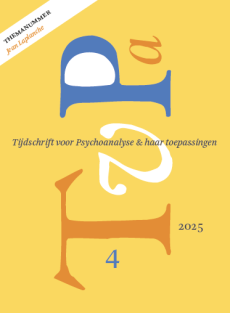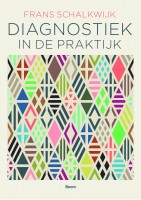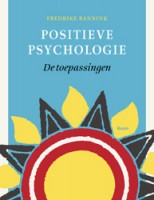De onbelichte zijde van de ziel. Over de relatie tussen psychoanalyse en film
Summary
In ‘The dark side of the soul’ the author analyses the relation between psychoanalysis and cinema by investigating the history of the first motion picture depicting psychoanalysis: ‘Secrets of a soul’ (Pabst 1926). The author investigates how this movie was received by analysts as well as outsiders, and also what influence psychoanalysis had on the development of pre-war European cinema.
In the second part of this paper, the author attempts to find an answer to the question why the traditional psychoanalytic viewpoint (the ‘Sherlock Holmes tradition’) and the modern cinema proved to be commensurable with each other no longer. And why the two could be reunited in filmsemiotic theory.
The main conclusion of the article is that in film theory and psychoanalysis two analogous turns of focus are visible: from actor to viewer (filmtheory) and from director to viewer (psychoanalysis).
Literatuur
- Anoniem (1926), Geheimnisse einer Seele. Illustrierter Film-Kurier, Vol. 8, Nr. 436.
- Anoniem (1926), Geheimnisse einer Seele. Der Bilderwart, Nr. 4, april 1926, p. 243-246.
- Anoniem (A.K.) (1926), Geheimnisse einer Seele. Die Filmtechnik, Nr. 7, p. 146-147.
- Anoniem (W.) (1926), Geheimnisse einer Seele. Der Film, Nr. 13.
- Anoniem, (Geheimnisse einer Seele). Bild Zeitung am Mittag, 25-3-1926.
- Anoniem, Complexes shown on screen by Freud. The New York Times, 25-3-1926, p. 16.
- Bergstrom, J. (1990), Psychological Explanation in the Films of Lang and Pabst. In: E.A. Kaplan, Psychoanalysis and Cinema. Routledge, New York, p. 163-180.
- Bettelheim, B. (1991), Freud’s Vienna and other essays. Vintage Books, New York.
- Chodorkoff, B., en S. Baxter (1974), ‘Secrets of a Soul’: An Early Psychoanalytic Film Venture. American Imago, 31 (4), p. 319-334.
- Eisner, L.H. (1965), The Haunted Screen. Thames and Hudson, London.
- Eppensteiner, B., en J. Reichmayr (1987), Die Psychoanalyse im Film 1925-26. Psyche, 41 (2) p. 129-139.
- Freud, S. (1937 [1960]), Die Endliche und Unendliche Analyse. Gesammelte Werke, Bd. 16. Fischer Verlag, Frankfurt. De eindige en oneindige analyse. Nederlandse editie: Klinische Beschouwingen, 4. Boom, Amsterdam/Meppel, 1992.
- Freud, S., en K. Abraham (1965), Sigmund Freud – Karl Abraham: Briefe 1907-1926 (H.C. Abraham en E.L. Freud, red.). Fischer Verlag, Frankfurt.
- Freud, S., en E. Jones (1993), The Complete Correspondence of Sigmund Freud and Ernest Jones (1908-1939) (R.A. Paskauskas, red.). The Belknap Press of Harvard University Press, Cambridge/London.
- Gay, P. (1970), Weimar Culture. Harper Torchbooks, New York.
- Gay, P. (1988), Freud. A Life for our time. J.M. Dent and Sons, New York. Nederlandse vertaling: Sigmund Freud: zijn leven en werk. Tirion, Baarn, 1989.
- Graaff, Chr. de (1929), Het ‘onbewuste’ in La Coquille. Filmliga, 2 (6), p. 90-91.
- Hall, M., Secrets of a Soul. The New York Times, 25-4-1927
- Henseleit, F. (1926), Geheimnisse einer Seele. Reichsfilmblatt, Nr. 13, p. 12.
- Jones, E. (1961), The Life and Work of Sigmund Freud, Vol. 1. Basic Books, New York.
- Kracauer, S. (1947), From Caligari to Hitler. A Psychological History of the German Film. Princeton University Press, Princeton, New Jersey.
- Metz, C. (1980), Histoire/Discourse. In: Seminar semiotiek van de film. Over Christian Metz. SUNschrift 159, p. 77-84. SUN, Nijmegen.
- Ophuysen, J.H.W. van (1929), Psychoanalytische opmerkingen over La Coquille et le Clergyman. Filmliga, 2 (5), p. 58-59.
- Potamkin, H.A. (1933 [1977]), Pabst and the social film. In: L. Jacobs (red.), The Compound Cinema. The Film Writings of Harry Alan Potamkin. Teachers College Press, New York.
- Rohde, E. (1976), A History of the Cinema – from its origins to 1970. Penguin Books, London.
- Sachs, H. (1926), Psychoanalyse. Rätsel des Unbewußten. Lichtbild – Bühne, Berlin.
- Spence, D. (1987), The Freudian Metaphor. Norton & Company, New York.
- Zeul, M. (1994), Bilder des Unbewußten. Zur Geschichte des psychoanalytischen Filmtheorie. Psyche, 48 (11), p. 975-1003.
 © 2009-2025 Uitgeverij Boom Amsterdam
© 2009-2025 Uitgeverij Boom Amsterdam
ISSN 1382-516x
De artikelen uit de (online)tijdschriften van Uitgeverij Boom zijn auteursrechtelijk beschermd. U kunt er natuurlijk uit citeren (voorzien van een bronvermelding) maar voor reproductie in welke vorm dan ook moet toestemming aan de uitgever worden gevraagd:
Behoudens de in of krachtens de Auteurswet van 1912 gestelde uitzonderingen mag niets uit deze uitgave worden verveelvoudigd, opgeslagen in een geautomatiseerd gegevensbestand, of openbaar gemaakt, in enige vorm of op enige wijze, hetzij elektronisch, mechanisch door fotokopieën, opnamen of enig andere manier, zonder voorafgaande schriftelijke toestemming van de uitgever.
Voor zover het maken van kopieën uit deze uitgave is toegestaan op grond van artikelen 16h t/m 16m Auteurswet 1912 jo. Besluit van 27 november 2002, Stb 575, dient men de daarvoor wettelijk verschuldigde vergoeding te voldoen aan de Stichting Reprorecht te Hoofddorp (postbus 3060, 2130 KB, www.reprorecht.nl) of contact op te nemen met de uitgever voor het treffen van een rechtstreekse regeling in de zin van art. 16l, vijfde lid, Auteurswet 1912.
Voor het overnemen van gedeelte(n) uit deze uitgave in bloemlezingen, readers en andere compilatiewerken (artikel 16, Auteurswet 1912) kan men zich wenden tot de Stichting PRO (Stichting Publicatie- en Reproductierechten, postbus 3060, 2130 KB Hoofddorp, www.cedar.nl/pro).
No part of this book may be reproduced in any way whatsoever without the written permission of the publisher.
Nieuwsbrief Boom Psychologie
Meld u nu aan en ontvang maandelijks de Boom Psychologie nieuwsbrief met aantrekkelijke aanbiedingen en de nieuwe uitgaven.
Aanmelden


